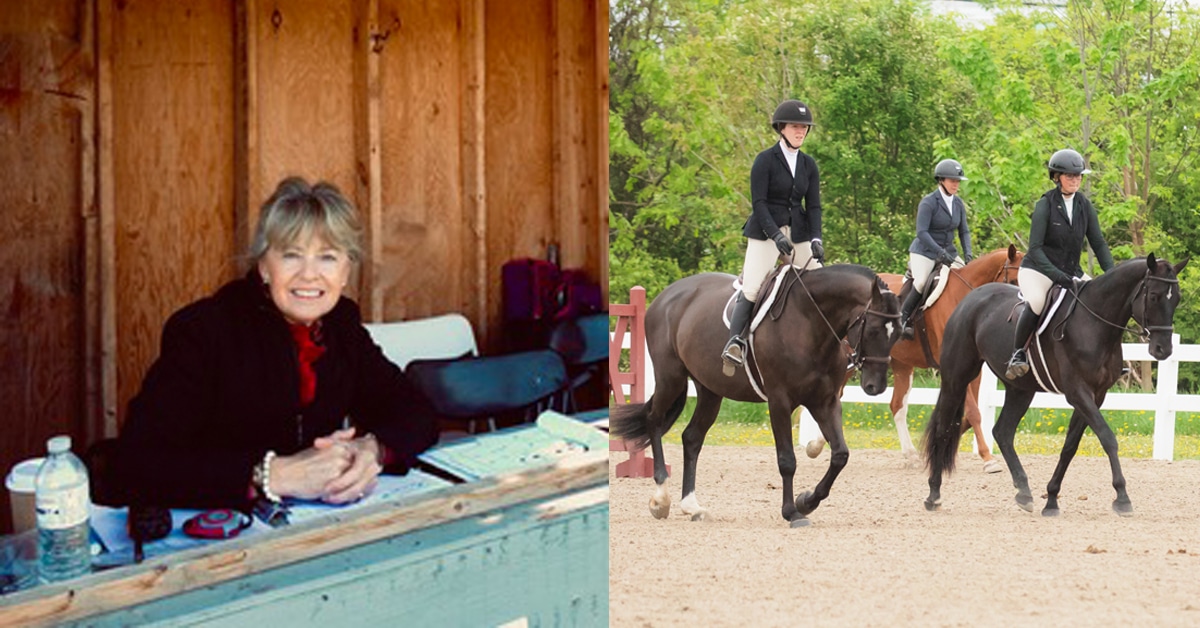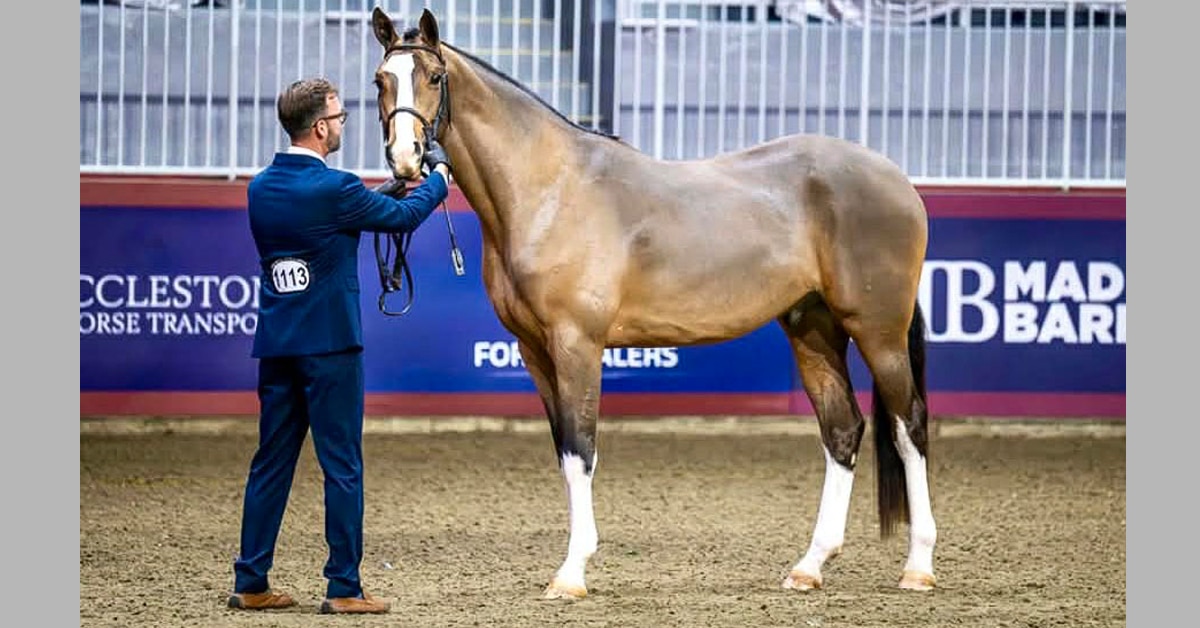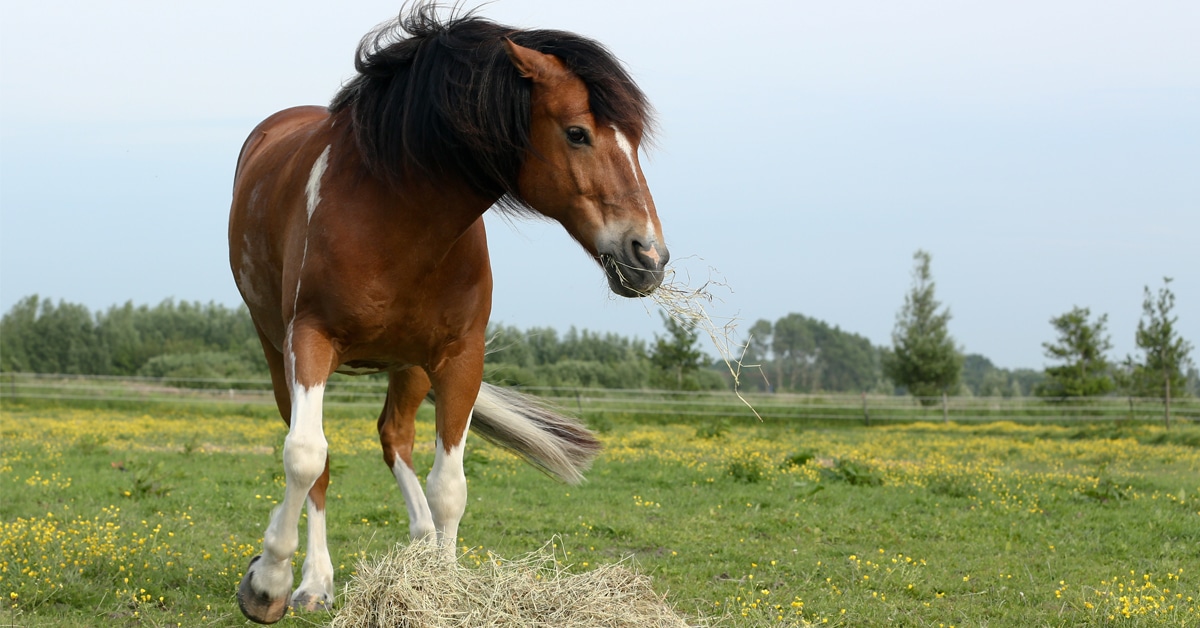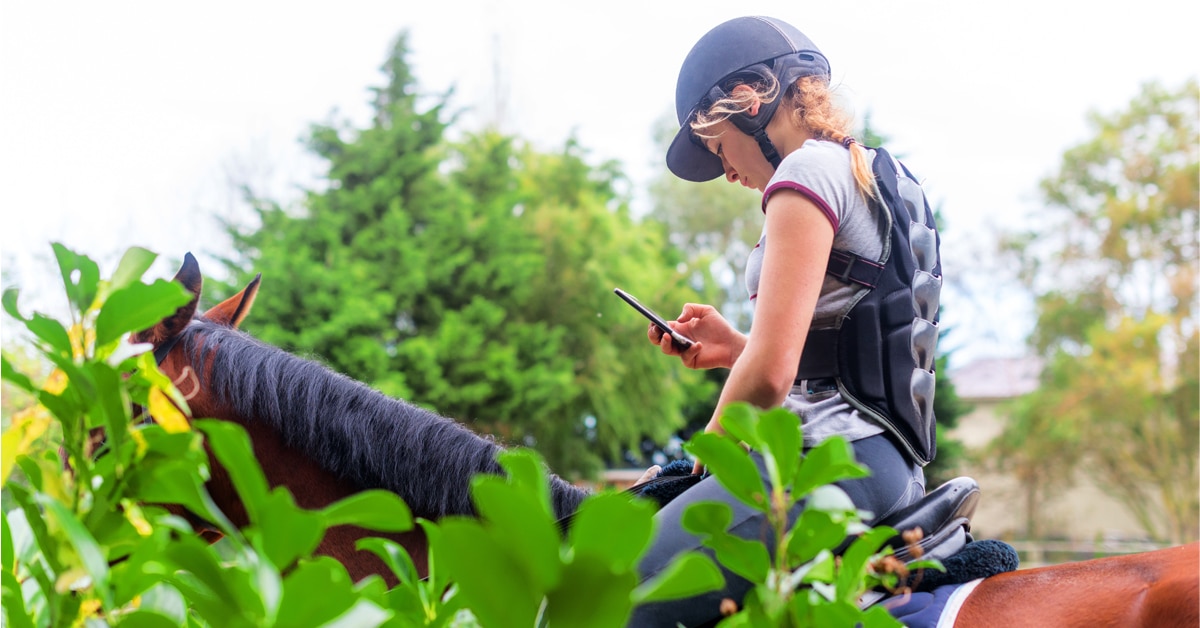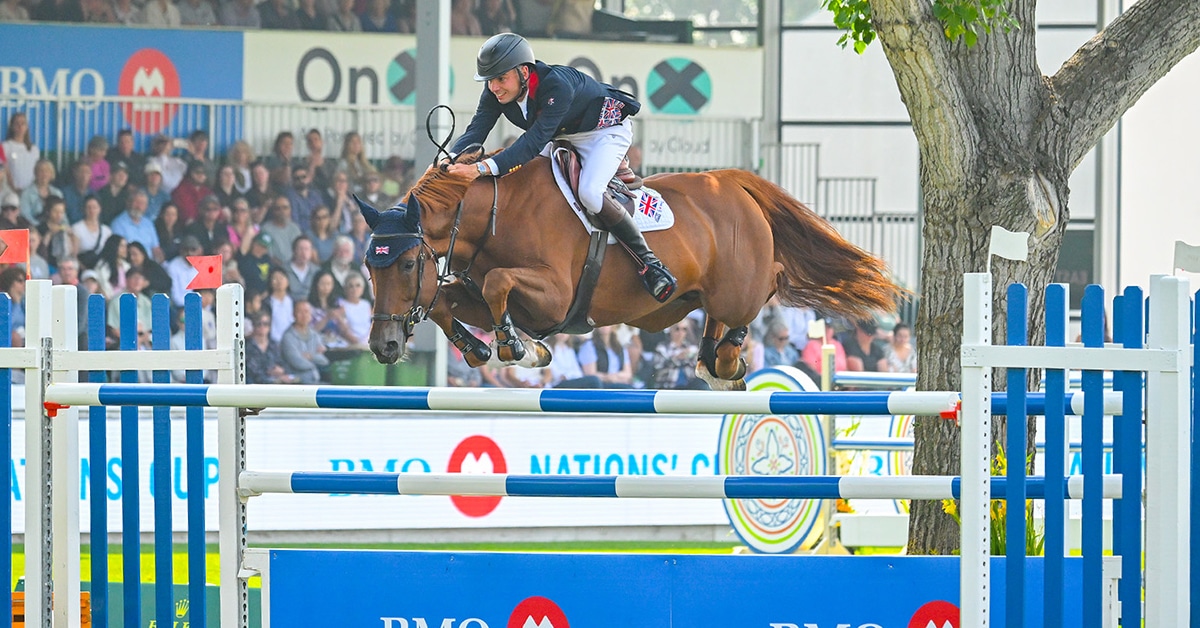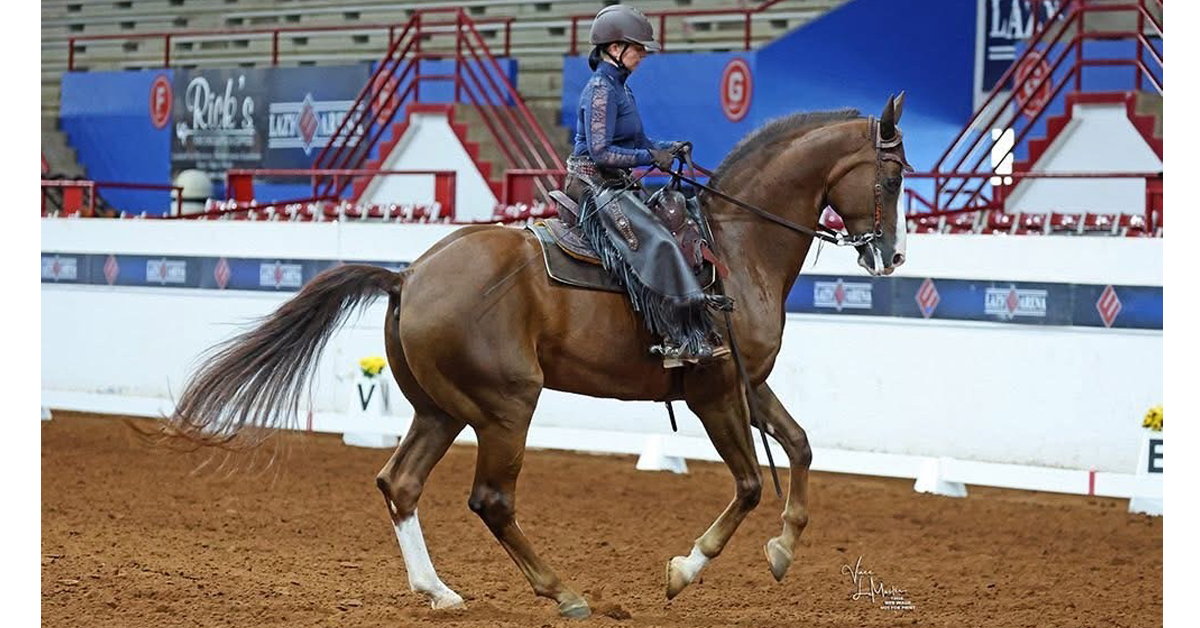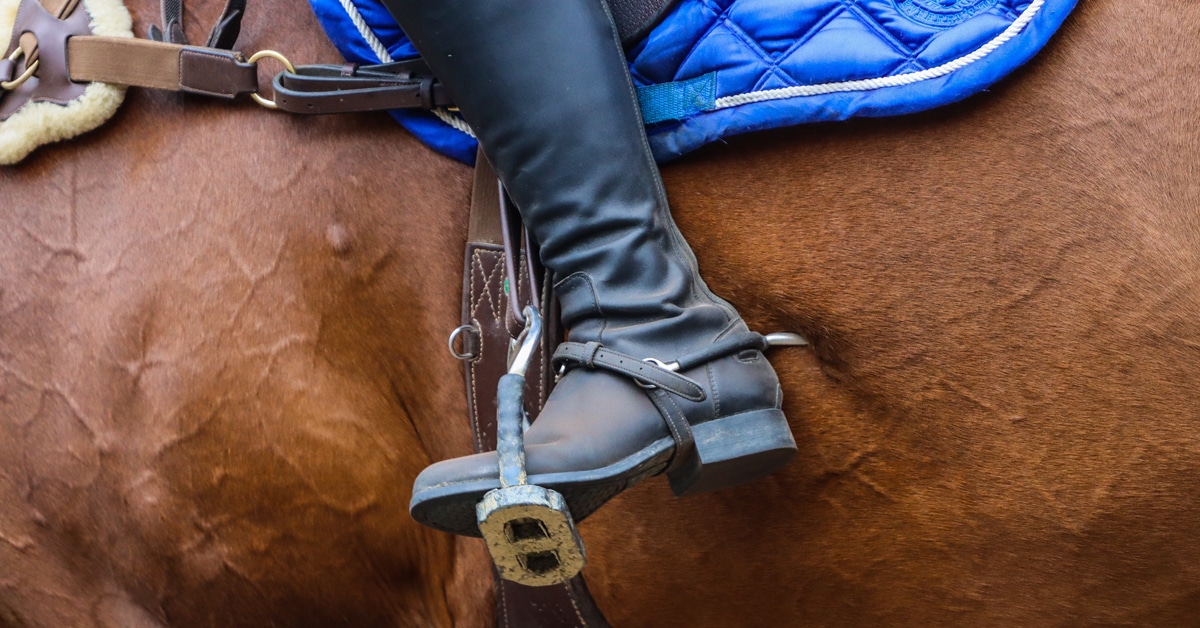A common misunderstanding of the difference between rhythm and tempo often results in horses being ridden more quickly, but not more correctly. Alison Banbury, an Equestrian Canada certified dressage judge, grand prix rider and owner of Hill Haven Farm in Hillsburgh, Ontario, sees this issue crop up frequently in both the show ring and the lessons she teaches.
“Each horse offers to travel in its own rhythm, but often the regularity of that movement changes, affecting the tempo or speed of that rhythm,” Banbury says. “It’s up to the rider to help the horse learn how to maintain the regular rhythm of each gait (four-beat walk, two-beat trot, and three beats at canter) at a tempo that is comfortable for the horse.
“For example, a horse that tends to break into trot from the canter should not be chased at speed to prevent the breaking. Doing so creates an unbalanced canter at a quick, unnatural tempo, resulting in the loss of the clear three-beat rhythm. Instead, the rider must teach the horse to develop a slower, more balanced canter in a natural tempo until he is strong enough to carry himself.”
To understand the distinction, Banbury refers to the definition of each term:
Rhythm: a strong, regular, repeated pattern of movement or sound.
Tempo: the rate or speed of motion or activity; pace.
“When a horse is pushed forward too quickly in a hurried rhythm, it loses that steady tempo. Instead of stepping under, the hind legs often push out behind, which I call skating, and frequently the hind toes will drag,” she continues. “The horse then finds it difficult to lift and gain control of the shoulders and it loses the ability to carry [itself] and maintain straightness and suppleness.
“Speed alone should not be part of the equation. In fact, what we are looking for is the energy and activity of the hind leg, or as they say in the French school, ‘amplitude,’ which I feel very well describes what we are looking for.
“Jumper riders know that if going too fast while lacking energy from behind, their horses will jump flat and pull a rail. It’s the same in dressage when the horse becomes flat in its back and can’t engage the hind leg.”
Banbury regularly hosts Dutch national team trainer Rien van der Schaft at Hill Haven for clinics. On his most recent visit in September, she asked him to weigh in on the topic.
“I see it every day; riders making their horses fly around the arena at top speed, believing this is correct,” van der Schaft says. “It is probably our fault a little as trainers, because we give the riders unclear instructions. We say ‘more forward’ and the rider thinks ‘faster.’ What we should be saying is ‘more activity, more impulsion from behind.’”
Banbury says the problem is particularly evident in the lengthened and medium gaits.
“While the horse should maintain the same rhythm and tempo as the working gaits, but show longer, bigger strides, we too often see just faster steps and a quicker tempo. In order to maintain both the rhythm and tempo while lengthening the stride, the horse must carry more of the weight behind and increase the energy and activity of the hind end.”
She suggests two exercises that riders of all levels can practice at home to improve the activity of the hind legs, work on rhythm and tempo, and improve their horse’s uphill balance.
#1 Warm up with rhythm
Begin with trot warm-up with three 20-metre circles in each direction, followed by a three-loop serpentine in each direction.
Count the rhythm of trot in sync with your horse’s steps: 1-2, 1-2, 1-2. What happens to the tempo when you circle or change direction? Concentrate on keeping the exact same tempo throughout the figures, without speeding up or slowing down.
Go large and on each long side make a loop to X and back – KXH (purple line) and MXF. Focus on maintaining a steady, unchanging pace and keeping the horse’s shoulders level as you change bend through the loops. While going large, notice whether your horse is slowing down on the short sides and speeding up in the loops.
Once you can perform these simple figures without the horse losing balance or changing tempo, ride double loops (red line): from K to the quarter line and back to E; and from E to the quarter line and back to H. Repeat on the opposite side.
Within any of these figures, a 10-metre circle can be incorporated to increase the difficulty. For example in the single loop exercise, try a 10 m circle at K, loop KXH, and 10m circle at H (pink). In the double loop (green), try 10m circle at F, loop to quarter line and back to B, 10m circle at B, loop to quarter line and back to M and finish with a 10m circle at M.
Troubleshooting: Riders often try to slow the horse down on the short side rather than allowing the short side to influence the horse’s balance and maintain their tempo. Similarly, we often ride the horse too forward and too quickly on a 10m circle, which throws the horse off balance.
Don’t focus on the frequent changes of bend in the loops; concentrate instead on the alignment of the shoulders and the hindquarters to prevent them from falling in or out. Steer the horse’s shoulders, not its head, to create balance and straightness within the changes of direction.
#2 Easy as 1-2-3
This exercise will help riders feel the difference between a faster, quicker trot and a true lengthened trot with bigger, longer steps.
Begin in an active working trot on the right rein near A.
As you approach the long side, cut the corner slightly and proceed along the wall in a nose-to-wall leg yield from K-V.
At V, change rein across the short diagonal to R, and continue the nose-to-wall leg yield in the new direction from R-M.
Repeat on the next long side.
Each time you change rein, count the number of trot steps it takes to cross the diagonal. If you maintain a steady tempo, the number of steps should be consistent every time in each direction.
Next, repeat the entire sequence, but this time as you cross the diagonal, ask the horse to lengthen the stride in trot.
What happens to your rhythm and tempo in the lengthened stride? If the horse breaks to canter, that is a loss of rhythm. If you horse speeds up, that is a change of tempo. If you correctly maintain the rhythm and tempo and create longer strides in the lengthened trot, you should cross the diagonal in fewer steps than in the working trot. However, if the horse is simply speeding up, the number of steps may increase.
Troubleshooting: Remember, rhythm and tempo are essential to maintaining a horse’s balance. An unbalanced horse is likely to become flat, fall on the forehand, and not maintain the activity and “push” from behind needed to lengthen the stride. Using the wall in the leg yield encourages the horse to shift its weight to the hindquarters and step under with the inside hind leg.
Don’t forget to prepare your horse by half-halting as you approach the wall from the short side of the arena to begin the leg yield, again to rebalance the horse before beginning the lengthened stride, and again as you complete the diagonal and prepare to leg yield in the new direction.
The Latest
